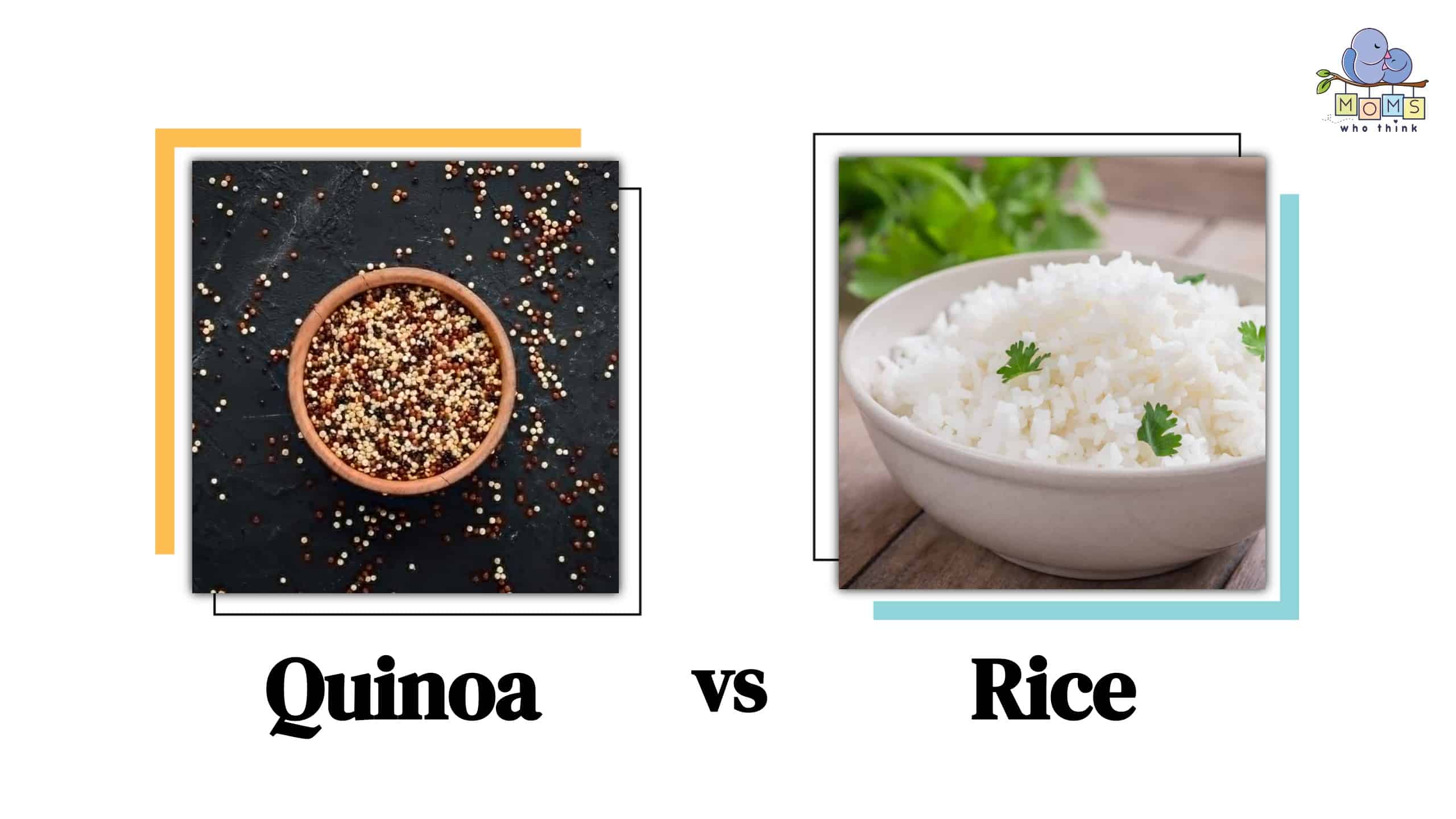Quinoa vs. Rice – which should I choose? Both Quinoa and Rice have several health benefits, such as better digestion and lower levels of inflammation. They are both excellent providers of nutrients such as fiber, protein, and amino acids plus, they are gluten-free.
Prepare yourself for a collision of flavorful madness as we look into the key differences between Rice and Quinoa. These grains are vying for your palate's attention and a place on the table, from the protein-rich, nutty Quinoa to the everlasting versatility of Rice.
Quinoa vs. Rice: Key Differences
Quinoa and Rice are both nutritious grains that complement a well-balanced diet. They have certain similarities in terms of nutritional value, but they also have substantial differences that make them unique.
Nutrients
Quinoa and brown rice serve as tasty and healthy supplements to a lot of people's dietary regimens. Quinoa, on the other hand, provides a bit more protein, dietary fibers, as well as other vital nutrients needed in our body compared to rice. It also has fewer calories and carbs than eice. Each cup of Quinoa has roughly 5 g more fiber and two times more protein than Rice.
Origin
Quinoa is an Andean plant that originates in Peru and Bolivia near Lake Titicaca. While being an indigenous staple meal at that time, Quinoa was farmed and consumed by pre-Columbian cultures until it was substituted by cereals during the invasion of the Spaniards. The Incas considered it a holy crop and termed it, chisaya mama, meaning ‘the mother of all grains'.
- The must-have convenient reference guide for every home cook!
- Includes more than 8,000 substitutions for ingredients, cookware, and techniques.
- Save time and money on by avoiding trips to grab that "missing" ingredient you don't really need.
Preserved grains of Rice originated in China around 3000 B.C. The Chinese emperor, Shen Nung, recognized the value of Rice to his citizens and created yearly rice celebrations during the sowing season, with the monarch tossing the initially sown seeds.
Glycemic index
For people who have diabetes as well as those who are at risk of getting it, Quinoa is the better grain to include in their diet. A low glycemic index ranges from 55 or below. Quinoa's glycemic index is 53. Thus it is unlikely to result in an abrupt increase in blood sugar levels. White Rice contains a high glycemic index, which means it might induce blood sugar rises. Additionally, certain studies have connected high glycemic index diets to an elevated possibility of type 2 diabetes.
- Brown Rice has a glycemic index of 68, which is considered average.
- White Rice has a high glycemic index of 73.
- Quinoa has a glycemic index of 53, making it a food with a low glycemic index.
Flavor
White Rice tastes like plain, simple starch, but Quinoa has a flavor that is somewhat nutty and almost sesame-like. It frequently takes the place of a grain like Rice or couscous and cooks very much the same. It is ideal for any meal because of its moderate flavor, which allows you to make it both sweet and savory. However, if you want to relish the oozing taste of your viand, Rice is the ideal choice since its blandness will not interfere with its overall taste.
Cost
Quinoa ranges higher in price compared to Rice. It is pricey due to its high nutritious content. Quinoa may range in price from $4 to $10 per bag at your local market. Also, this grain is not a cheap product to cultivate for farmers. It needs additional effort and expense to be able to cultivate it for people effectively.
There isn't enough land available to be able to cultivate this crop because of the elevation required for it to flourish. As a result, only a few crops may be grown since there is less space accessible, which reduces the amount of food that farmers can produce. Additionally, the cultivation and growing process is costly and takes about 90–120 days, and this, together with the growth condition that the grain must be subjected to no low temperatures, is said to be a contributing cause to its high cost.
On the other hand, Rice is a long-standing mainstay in most Asian and American meals, and that's because it's hearty, flexible, and crazily, delightfully inexpensive. Rice is cheaper because many individuals grow it, and it is the most accessible grain you could find in the market.
Quinoa vs. Rice: Nutritional Value
Let's compare the nutritional values of quinoa and rice, two popular grains.
Quinoa, a pseudo-cereal, has a high protein content and unique nutrient composition. It contains all nine essential amino acids, making it a complete protein source. Quinoa is also rich in dietary fiber, supporting healthy digestion and promoting satiety. It provides soluble and insoluble fibers. Additionally, Quinoa is a good source of minerals like magnesium, phosphorus, and manganese.
Rice, a widely consumed staple grain, offers a different nutritional profile. While it has lower protein content compared to Quinoa, Rice is a good source of carbohydrates, providing energy. Brown Rice, in particular, is more nutritious than refined white Rice since it retains the bran and germ layers. Brown Rice is higher in fiber, vitamins, and minerals, while white Rice undergoes milling that removes these nutrient-rich components.
In terms of calories, both Quinoa and Rice have a similar range, providing around 200-220 calories per cooked cup. However, Quinoa generally contains more fat and protein, offering a more balanced nutritional profile.
When it comes to dietary preferences and health conditions, Quinoa is often favored by vegetarians or vegans due to its complete protein content. Additionally, Quinoa is gluten-free, making it suitable for individuals with gluten sensitivities or celiac disease. Rice, on the other hand, is versatile and well-tolerated by most people and easily digested.
In conclusion, Quinoa stands out for its high protein content, complete amino acid profile, and unique nutrients. Brown Rice, in comparison, provides carbohydrates and some vitamins and minerals. Both grains can be part of a healthy diet, with the choice depending on individual nutritional needs, dietary preferences, and culinary considerations.
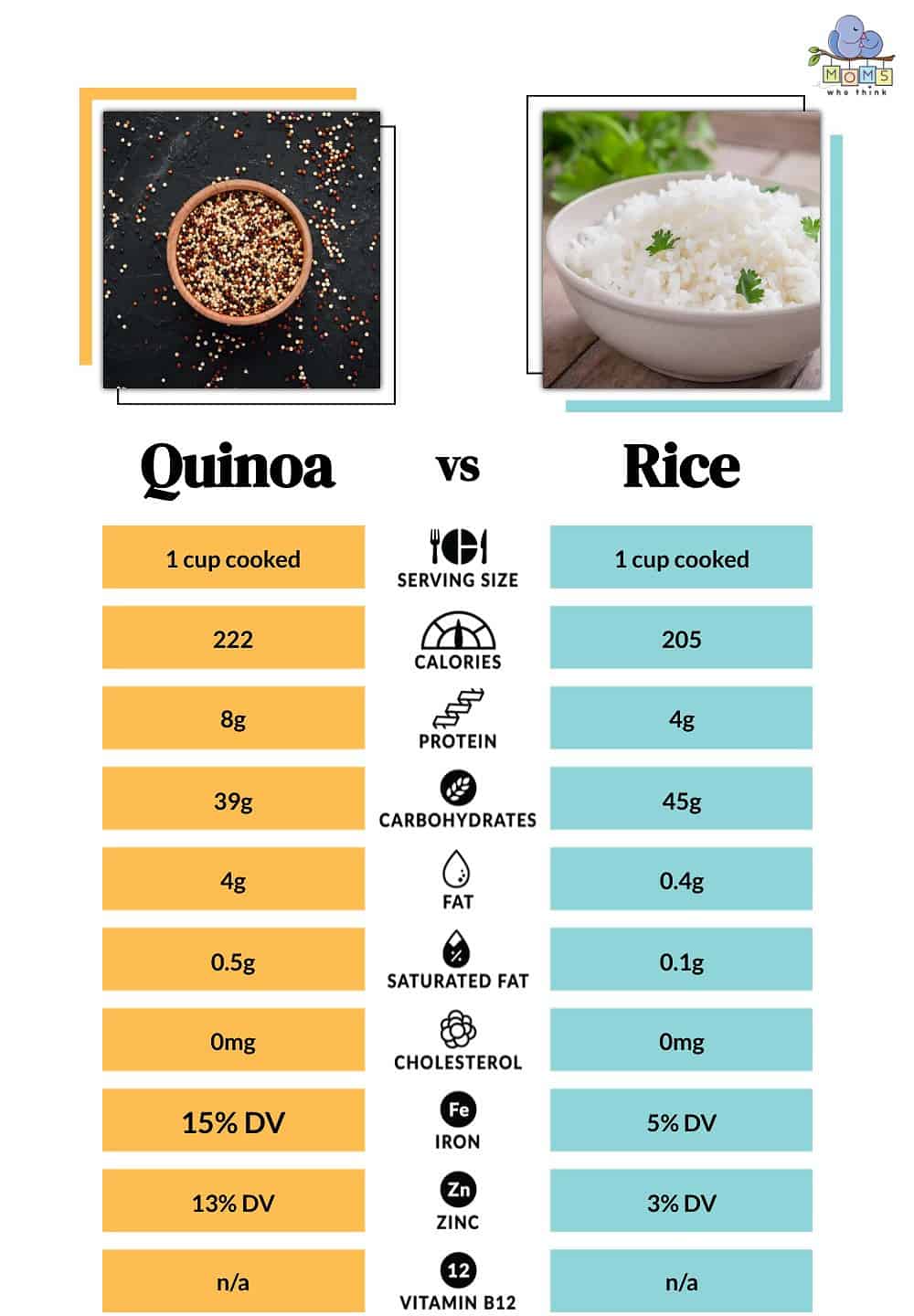
©
What is Quinoa?
Although it has been traditionally grown by indigenous peoples in the Andes Mountains of South America for more than 5,000 years, Quinoa has just recently gained popularity in the United States.
Whole grain quinoa is a powerhouse of vitamins and minerals, dietary fiber, protein, and plant-based substances. Quinoa functions as a whole grain, although it is, in fact, a seed. It comes from a goosefoot plant, which resembles a weed and is closely associated with spinach and beets. Just like brown Rice, these pseudo-grains exhibit a nutty and earthy flavor. They do, however, have an extremely supple, somewhat chewy feel once it enters your mouth.
Health benefits:
Quinoa, which is more nutritious than brown Rice and has recently become an increasingly common rice substitute in many countries as people grow more nutritionally mindful.
- The must-have convenient reference guide for every home cook!
- Includes more than 8,000 substitutions for ingredients, cookware, and techniques.
- Save time and money on by avoiding trips to grab that "missing" ingredient you don't really need.
- Quinoa, contrary to almost all plant-based diets, is a complete source of protein, meaning it has all nine necessary amino acids.
- Quinoa may benefit gut health by increasing the diversity of good gut bacteria and decreasing the inflammation-related signs associated with illnesses such as colitis, according to research.
- Antioxidants, which are substances that aid in the defense against dangerous free radicals that fight chronic diseases such as cancer and heart disease, are also abundant in Quinoa.
What is Rice?
Rice is a nutritious starchy cereal grain and the family Poaceae that includes the grass plants from which it is grown. Dhanya, the Rice's prehistoric Indian name, translates to “sustenance for the human race.” This grain does not only serve as a source of carbohydrates, but it also provides a living for nearly half of the population of the planet, who depend on rice farming for a living. Rice nourishes numerous individuals compared to any other agricultural product, making it the most significant plant we have domesticated. Because grain is typically inexpensive and readily available, this starchy, high-calorie grain serves as the foundation of many diets.
Health Benefits
Rice is gluten-free, the same as Quinoa. In recent years, brown Rice has taken the lead among health-conscious people.
- The body's primary fuel source, carbohydrates, is abundant in this grain. Carbohydrates are crucial for fuelling activity and will keep you energized and satiated.
- Rice is also an excellent source of many B vitamins. Eating rice aids in promoting the health of your nervous system since it is high in B vitamins.
- Rice also aids in blood pressure regulation. Since Rice contains less salt, it is regarded as one of the greatest foods for those with hypertension and high blood pressure.
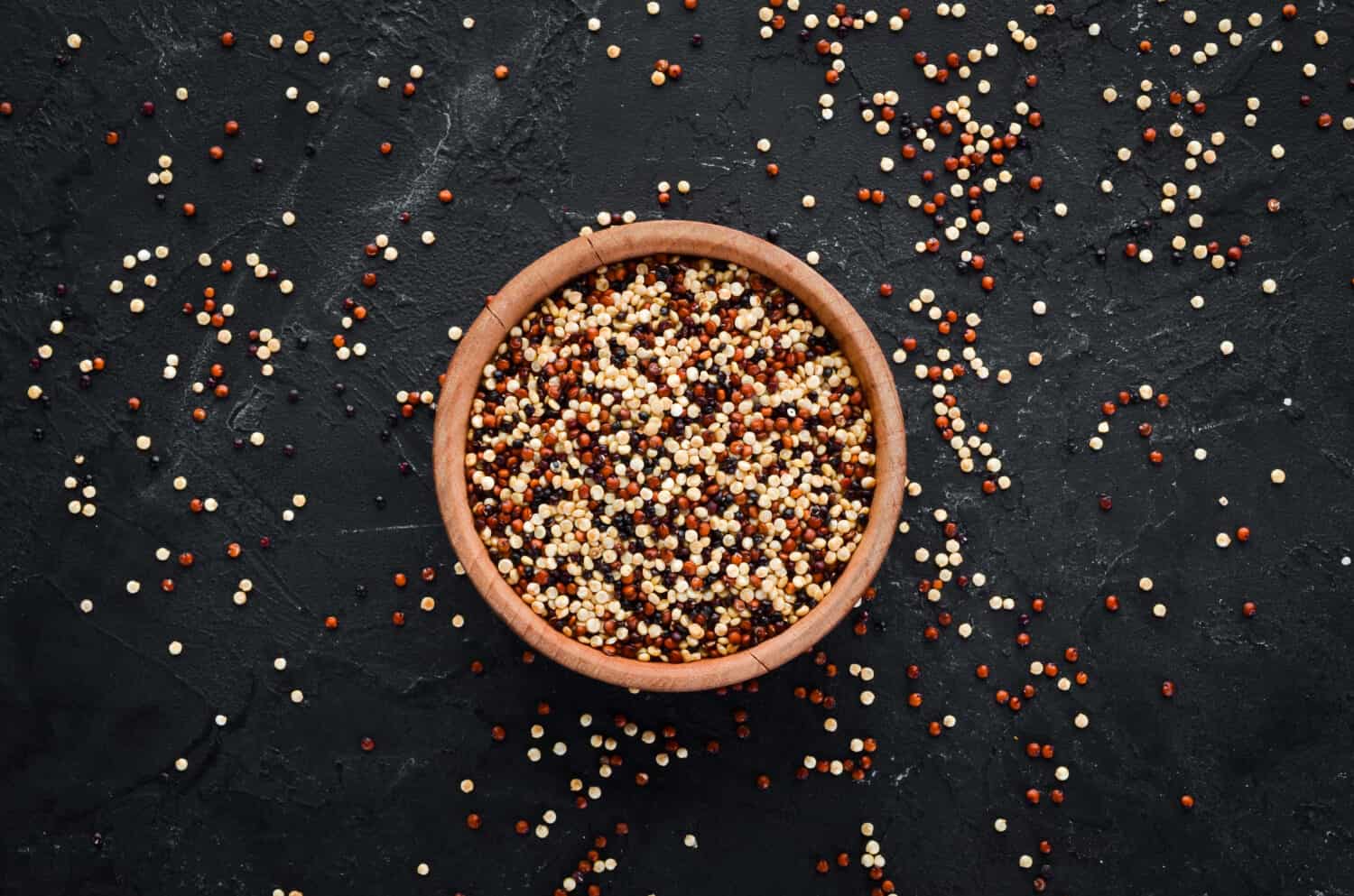
©YARUNIV Studio/Shutterstock.com
Rice substitutes
Eating plain old white Rice every day may get sort of boring, but these substitutes can offer variation to your dietary habits as well as provide more nutritious alternatives than white Rice.
Below are a few of our top tasty and nutritious rice substitutes.
Shirataki rice
Shirataki rice is a diet meal since it is manufactured from konjac root, an Asian native plant that has special fiber known as glucomannan.
Barley
Barley is a grain that is linked to both rye and wheat. Despite being less commonly recognized than some of the rest of the grains, barley has a significant amount of fiber and a few additional vital minerals, like selenium.
Cauliflower rice
This is an excellent low-carb substitute for Rice with an excellent source of fiber and has greater levels of certain minerals, as well as B, C, and K1 vitamins.
Quinoa Substitutes
There are a number of other grains and seeds that you may add to your diet as Quinoa substitutes.
The following are some more options you might wish to consider:
Lentils
Together with peas and beans, legumes like lentils are a good source of fiber and minerals and make for a good substitute for Quinoa if you're not necessarily too concerned about nutritional content.
Millet
With extra water and frequent stirring, millet—which is also gluten-free—can become soft or fluffy like Quinoa. Because of the high magnesium concentration, it is also full of protein and good for the heart.
Teff
Teff is a grain that is mostly composed of carbohydrates and is comparable to Quinoa in terms of its carbohydrate and protein composition. It is essentially Quinoa's gluten-free sibling since its preparation and flavor is almost identical to Quinoa.
Conclusion
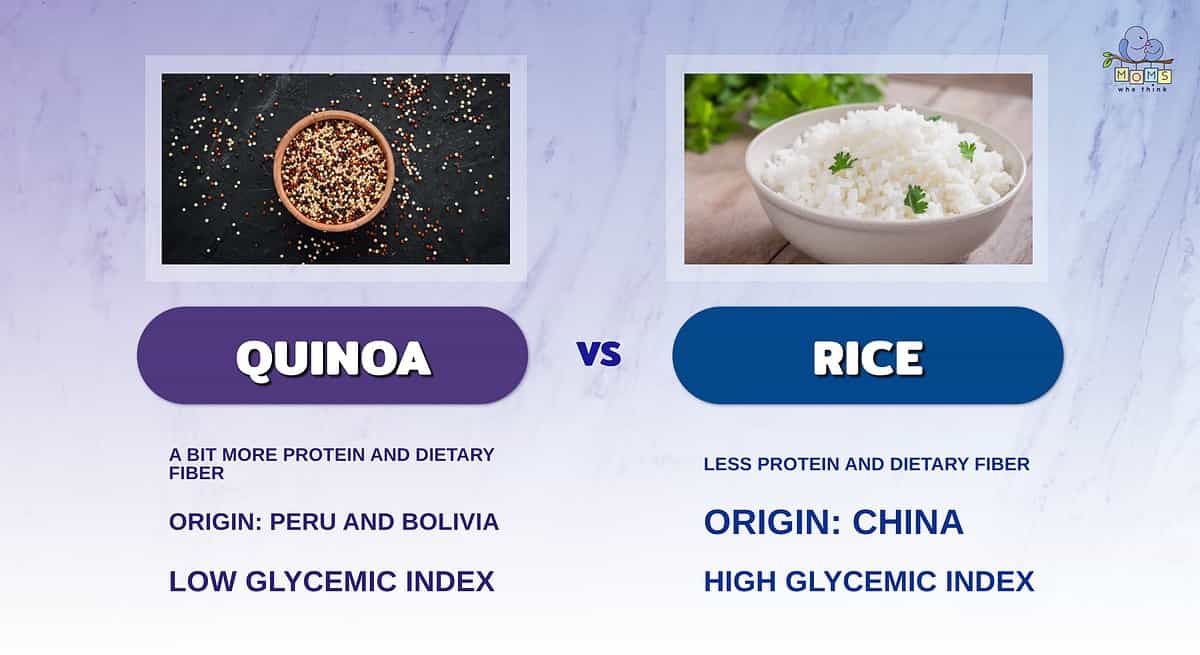
- Its low glycemic index makes quinoa a great choice for diabetics or those at risk for diabetes.
- Quinoa was heavily consumed in pre-Colombian South America, originating in Peru and Bolivia. Meanwhile, rice originates from China.
- Quinoa has a bit more protein and dietary fiber than rice.
Rice has long dominated as a valued staple in various cuisines owing to its extensive history and versatility. Quinoa, on the contrary, has gained popularity and captured appetites across the world due to its historical origins and outstanding health benefits.
Quinoa ultimately succeeds in living up to its advertised guarantee. It is a versatile, flavorful seed that should have a spot in your healthy diet, given its high protein and mineral levels. To maintain excellent health, we should all consume a healthy, balanced diet. Rice might not be your greatest option for losing weight. As a matter of fact, it may cause weight gain, so pick your weight-reduction foods carefully.
Whichever grain you select, this still varies largely on our demands, requirements, lifestyle, and accessibility. Either way, when taken in moderation, Quinoa and Rice are both healthy foods.
Give this wild rice stuffing a try:
Print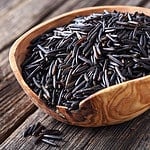
Wild Rice Stuffing
- Total Time: 55-60 minutes
Ingredients
- 4 slices turkey bacon cut into 1-inch pieces
- 1 cup onion chopped
- 1 cup celery chopped
- 1/2 pound mushrooms sliced
- 1 package (4 ounces) wild rice cooked according to package directions
- 2 cups bread crumbs
- 1/2 pound turkey breakfast sausage, cooked
- 1 teaspoon dried oregano
- 1/2 teaspoon dried sage
- Salt
- Pepper
Instructions
- Preheat oven to 325°F.
- In medium-size skillet, over medium heat, sauté bacon until almost crisp.
- Add onion, celery and mushrooms; continue cooking until vegetables are tender.
- In large bowl combine bacon mixture, wild rice, bread crumbs, sausage, oregano and sage. Season to taste with salt and pepper if desired.
- Spoon stuffing into lightly greased 2-quart casserole dish.
- Bake, covered, at 325°F for 35 to 40 minutes.
- Prep Time: 20 minutes
- Cook Time: 35-40 minutes
